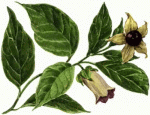Botany
|
25 october 2014 06:00:27 |
| Production of superoxide from Photosystem II in a rice ( Oryza sativa L.) mutant lacking PsbS (BMC Plant Biology) |
|
Tweet Background:
PsbS is a 22-kDa Photosystem (PS) II protein involved in non-photochemical quenching (NPQ) of chlorophyll fluorescence. Rice (Oryza sativa L.) has two PsbS genes, PsbS1 and PsbS2. However, only inactivation of PsbS1, through a knockout (PsbS1-KO) or in RNAi transgenic plants, results in plants deficient in qE, the energy-dependent component of NPQ.
Results:
In studies presented here, under fluctuating high light, growth of young seedlings lacking PsbS is retarded, and PSII in detached leaves of the mutants is more sensitive to photoinhibitory illumination compared with the wild type. Using both histochemical and fluorescent probes, we determined the levels of reactive oxygen species, including singlet oxygen, superoxide, and hydrogen peroxide, in leaves and thylakoids. The PsbS-deficient plants generated more superoxide and hydrogen peroxide in their chloroplasts. PSII complexes isolated from them produced more superoxide compared with the wild type, and PSII-driven superoxide production was higher in the mutants. However, we could not observe such differences either in isolated PSI complexes or through PSI-driven electron transport. Time-course experiments using isolated thylakoids showed that superoxide production was the initial event, and that production of hydrogen peroxide proceeded from that.
Conclusion:
These results indicate that at least some of the photoprotection provided by PsbS and qE is mediated by preventing production of superoxide released from PSII under conditions of excess excitation energy. |
| 78 viewsCategory: Botany |
 Identification and characterization of cold-responsive microRNAs in tea plant ( Camellia sinensis ) and their targets using high-throughput sequencing and degradome analysis (BMC Plant Biology) Identification and characterization of cold-responsive microRNAs in tea plant ( Camellia sinensis ) and their targets using high-throughput sequencing and degradome analysis (BMC Plant Biology)Distinct double flower varieties in Camellia japonica exhibit both expansion and contraction of C-class gene expression (BMC Plant Biology) 
|
| blog comments powered by Disqus |
MyJournals.org
The latest issues of all your favorite science journals on one page
The latest issues of all your favorite science journals on one page



